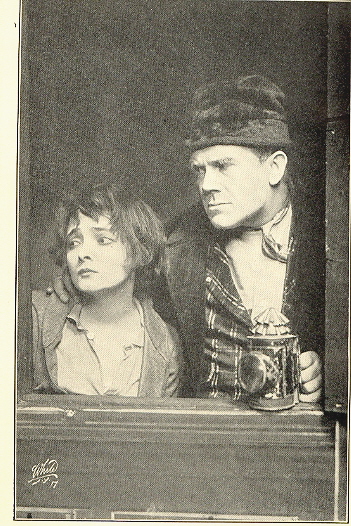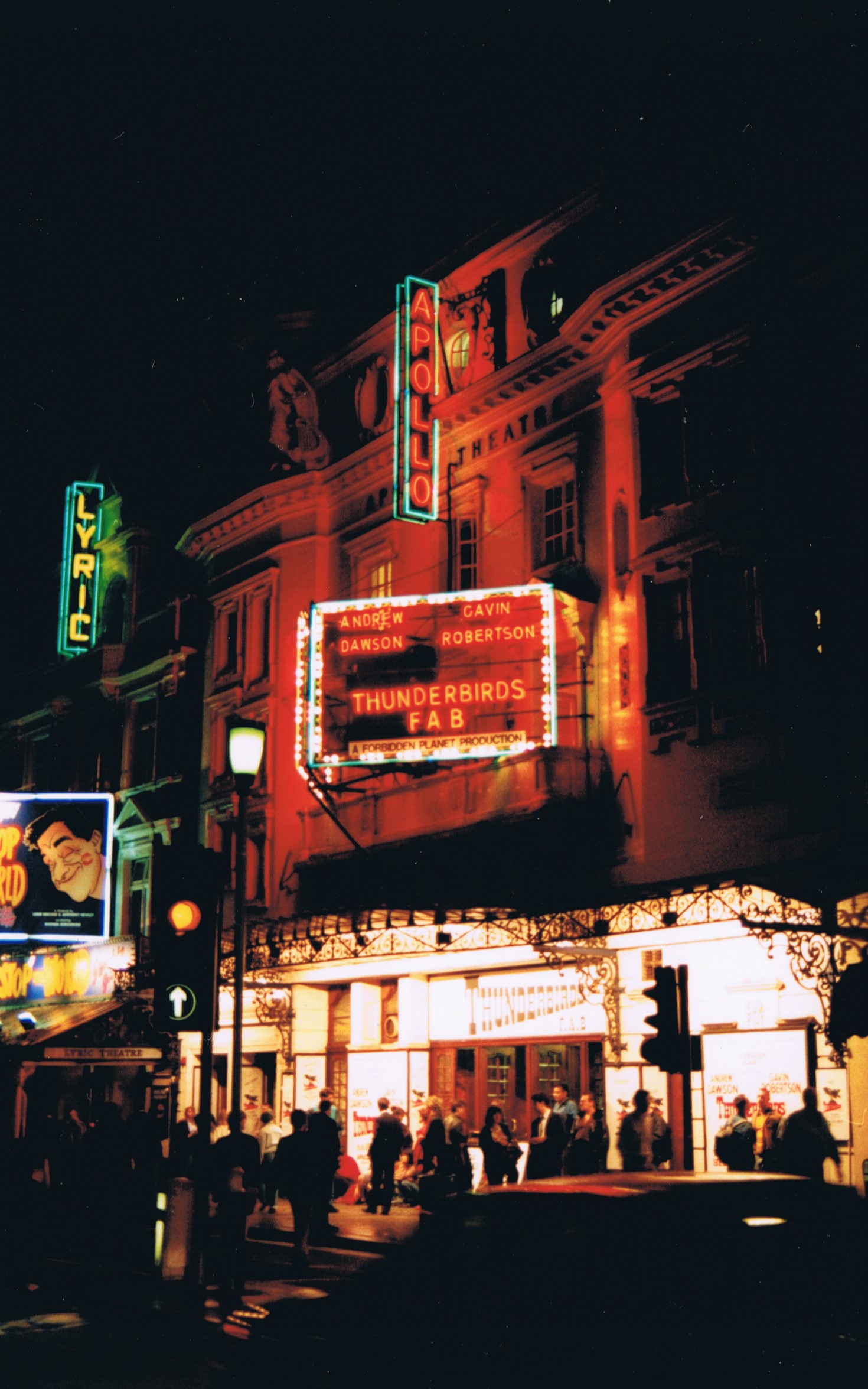|
Amy Brandon Thomas
Amy Marguerite Brandon Thomas (9 March 1890 – 6 May 1974) was an English film and stage actress. She was the daughter of the playwright Brandon Thomas. She is also known as Amy Brandon-Thomas. Life and career Amy Brandon Thomas was born in London, the daughter of the playwright Brandon Thomas and his wife Marguerite, and was educated privately. She married William Deane Barnes-Brand. Thomas joined the stage professionally in 1907, playing Alice Ormerod in ''A Lancashire Sailor'' at the Theatre Royal, Preston, where she also played Ela Delahay in her father's comedy, ''Charley's Aunt''. She appeared in London that Christmas at the New Royalty Theatre in the same two plays, although this time she played Kitty Verdun in ''Charley's Aunt''. She was next seen at the Garrick Theatre in 1908, as Lucy Lorirner in '' A Pair of Spectacles'', with Sir John Hare, subsequently touring with him. In 1909 she was at the Royal Court Theatre in London as Kate Dalliscm in ''Strangers Withi ... [...More Info...] [...Related Items...] OR: [Wikipedia] [Google] [Baidu] |
Lyn Harding
David Llewellyn Harding (12 October 1867 – 26 December 1952), known professionally as Lyn Harding, was a Welsh actor who spent 40 years on the stage before entering British made silent films, talkies and radio. He had an imposing and menacing stage presence and came to be cast as the villain in many films, notably Professor Moriarty in dramatisations of the Sherlock Holmes stories. Early years He was born in 1867 at St. Brides Wentloog, in Monmouthshire, into a strict Congregationalist Welsh-speaking family. Acting career He started his career as an apprentice draper in Newport, Wales and but he was drawn to an acting career. He began giving readings from Shakespeare at a chapel in Cardiff. In 1890 a chance meeting with a touring group on a train led to him standing in for a sick actor and his first professional engagement. He opened on 28 August 1890 in ''The Grip Of Iron'' at the Theatre Royal, Bristol. He toured "the provinces" and eventually made his London debut ... [...More Info...] [...Related Items...] OR: [Wikipedia] [Google] [Baidu] |
Wyndham's Theatre
Wyndham's Theatre is a West End theatre, one of two opened by actor/manager Charles Wyndham (the other is the Criterion Theatre). Located on Charing Cross Road in the City of Westminster, it was designed c.1898 by W. G. R. Sprague, the architect of six other London theatres between then and 1916. It was designed to seat 759 patrons on three levels; later refurbishment increased this to four seating levels. The theatre was Grade II* listed by English Heritage English Heritage (officially the English Heritage Trust) is a charity that manages over 400 historic monuments, buildings and places. These include prehistoric sites, medieval castles, Roman forts and country houses. The charity states that i ... in September 1960. History Wyndham had always dreamed of building a theatre of his own, and through the admiration of a patron and the financial confidence of friends, he was able to realise his dream. Wyndham's Theatre opened on 16 November 1899, in the presence of the Ed ... [...More Info...] [...Related Items...] OR: [Wikipedia] [Google] [Baidu] |
Murder!
''Murder!'' is a 1930 British thriller film co-written and directed by Alfred Hitchcock and starring Herbert Marshall, Norah Baring and Edward Chapman. Written by Hitchcock, his wife Alma Reville and Walter C. Mycroft, it is based on the 1928 novel ''Enter Sir John'' by Clemence Dane and Helen Simpson. It was Hitchcock's third all-talkie film, after ''Blackmail'' (1929) and '' Juno and the Paycock'' (1930). Plot In 1930, Diana Baring (Norah Baring), a young actress in a travelling theatre troupe, is found in a daze with blood on her clothes, sitting by the murdered body of another young actress, Edna Druce. The poker used to commit the murder was at Diana's feet, but she has no memory of what happened during the minutes the crime was committed. The two young women were thought to have been rivals, and the police arrest her. Diana withholds some important information deliberately, to protect something about the identity of a man that she will not name. At her trial most of t ... [...More Info...] [...Related Items...] OR: [Wikipedia] [Google] [Baidu] |
Alfred Hitchcock
Sir Alfred Joseph Hitchcock (13 August 1899 – 29 April 1980) was an English filmmaker. He is widely regarded as one of the most influential figures in the history of cinema. In a career spanning six decades, he directed over 50 feature films, many of which are still widely watched and studied today. Known as the "Master of Suspense", he became as well known as any of his actors thanks to his many interviews, his cameo roles in most of his films, and his hosting and producing the television anthology '' Alfred Hitchcock Presents'' (1955–65). His films garnered 46 Academy Award nominations, including six wins, although he never won the award for Best Director despite five nominations. Hitchcock initially trained as a technical clerk and copy writer before entering the film industry in 1919 as a title card designer. His directorial debut was the British-German silent film '' The Pleasure Garden'' (1925). His first successful film, '' The Lodger: A Story of the London F ... [...More Info...] [...Related Items...] OR: [Wikipedia] [Google] [Baidu] |
World War I
World War I (28 July 1914 11 November 1918), often abbreviated as WWI, was one of the deadliest global conflicts in history. Belligerents included much of Europe, the Russian Empire, the United States, and the Ottoman Empire, with fighting occurring throughout Europe, the Middle East, Africa, the Pacific, and parts of Asia. An estimated 9 million soldiers were killed in combat, plus another 23 million wounded, while 5 million civilians died as a result of military action, hunger, and disease. Millions more died in genocides within the Ottoman Empire and in the 1918 influenza pandemic, which was exacerbated by the movement of combatants during the war. Prior to 1914, the European great powers were divided between the Triple Entente (comprising France, Russia, and Britain) and the Triple Alliance (containing Germany, Austria-Hungary, and Italy). Tensions in the Balkans came to a head on 28 June 1914, following the assassination of Archduke Franz Ferdin ... [...More Info...] [...Related Items...] OR: [Wikipedia] [Google] [Baidu] |
The Play Pictorial
''The Play Pictorial'' was an English theatrical magazine that was published in London between 1902 and 1939. ''The Play Pictorial'' provided pictorial records of West End theatrical productions. Each issue described a single show, with descriptions of the plot, the costumes and the sets, and many photographs of the cast and scenes from the production. For musicals, ''The Play Pictorial'' usually included some of the lyrics and short extracts from the score. The first editor of ''The Play Pictorial'' was Rudolph Birnbaum. In May 1904, he was replaced by Frank M. Boyd. In 1905, Fred Dangerfield became editor, handling the next 20 issues. In 1905, ''The Play Pictorial'' merged with a rival magazine, ''The Play'', which had been published between May and October 1904 under the editorship of Benjamin William Findon. In mid-1906, Findon took over the combined magazine, which he continued to edit for over 30 years. The last issue of ''The Play Pictorial'', no. 446, appeared in ... [...More Info...] [...Related Items...] OR: [Wikipedia] [Google] [Baidu] |
Piccadilly Theatre
The Piccadilly Theatre is a West End theatre located at 16 Denman Street, behind Piccadilly Circus and adjacent to the Regent Palace Hotel, in the City of Westminster, London, England. Early years Built by Bertie Crewe and Edward A. Stone for Edward Laurillard, its simple façade conceals a grandiose Art Deco interior designed by Marc-Henri Levy and Gaston Laverdet, with a 1,232-seat auditorium decorated in shades of pink. Gold and green are the dominant colours in the bars and foyer, which include the original light fittings. Upon its opening on 27 April 1928, the theatre's souvenir brochure claimed, "If all the bricks used in the building were laid in a straight line, they would stretch from London to Paris." The opening production, Jerome Kern's musical ''Blue Eyes'', starred Evelyn Laye, one of the most acclaimed actresses of the period. [...More Info...] [...Related Items...] OR: [Wikipedia] [Google] [Baidu] |
Apollo Theatre
The Apollo Theatre is a Grade II listed West End theatre, on Shaftesbury Avenue in the City of Westminster, in central London.English Heritage listing accessed 28 April 2007 Designed by the architect Lewin Sharp for owner , it became the fourth legitimate theatre to be constructed on the street when it opened its doors on 21 February 1901, with the American '' [...More Info...] [...Related Items...] OR: [Wikipedia] [Google] [Baidu] |
Prince Of Wales's Theatre
The Scala Theatre was a theatre in Charlotte Street, London, off Tottenham Court Road. The first theatre on the site opened in 1772, and the theatre was demolished in 1969, after being destroyed by fire. From 1865 to 1882, the theatre was known as the Prince of Wales's Theatre (not to be confused with Prince of Wales Theatre). Origins The theatre began on this site as The New Rooms where concerts were performed, in Charlotte Street, in 1772, under the management of Francis Pasquali. Popularity, and royal patronage led to the building's enlargement by James Wyatt, and its renaming as the King's Concert Rooms (1780–1786). It then became Rooms for Concerts of Ancient Music and Hyde's Rooms (1786–1802, managed by ''The Directors of Concerts and Ancient Music''). In 1802, a private theatre club managed by Captain Caulfield, the ''"Pic-Nics"'', occupied the building and named it the Cognoscenti Theatre (1802–1808). It became the New Theatre (1808–1815) and was extended and ... [...More Info...] [...Related Items...] OR: [Wikipedia] [Google] [Baidu] |
Lyric Theatre (London)
The Lyric Theatre is a West End theatre in Shaftesbury Avenue in the City of Westminster. It was built for the producer Henry Leslie, who financed it from the profits of the light opera hit, ''Dorothy'', which he transferred from its original venue to open the new theatre on 17 December 1888. Under Leslie and his early successors the house specialised in musical theatre, and that tradition has continued intermittently throughout the theatre's existence. Musical productions in the theatre's first four decades included ''The Mountebanks'' (1892), ''His Excellency'' (1894), '' The Duchess of Dantzig'' (1903), ''The Chocolate Soldier'' (1910) and '' Lilac Time'' (1922). Later musical shows included ''Irma La Douce'' (1958), ''Robert and Elizabeth'' (1964), '' John, Paul, George, Ringo ... and Bert'' (1974), '' Blood Brothers'' (1983), ''Five Guys Named Moe'' (1990) and ''Thriller – Live'' (2009). Many non-musical productions have been staged at the Lyric, from Shakespeare to O' ... [...More Info...] [...Related Items...] OR: [Wikipedia] [Google] [Baidu] |
Comedy Theatre
The Harold Pinter Theatre, known as the Comedy Theatre until 2011,"Harold Pinter has London theatre named after him" ''BBC News'', 7 September 2011, accessed 8 September 2011. is a , and opened on Panton Street in the , on 15 October 1881, as the Royal Comedy Theatre. It was designed by and built in just six months in painted ( |
Peter Ibbetson (play)
''Peter Ibbetson'' is a play based on George du Maurier's 1891 novel of the same name. It debuted in the United States in 1917. History The play was written by John N. Raphael, a London newspaper correspondent, who had written the adaptation of the novel twenty years prior, and showed his work to actress Constance Collier, who was eager to bring it to America. Mantle, BurnsWhat's What in the Theatre ''The Green Book Magazine'', July 1917, pp. 24-28Peter Ibbetson - A Dramatic Tribute to Du Maurier's Persistent Charm ''Current Opinion'', June 1917, pp. 399-402 Raphael's play was actually first performed at a single London matinee show on June 23, 1915, as a benefit for a |




.jpg)


